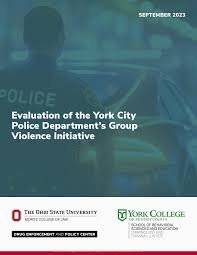By Hayli Millar, Yvon Dandurand , Marcella Chan With the Assistance of Abeni Steegstra, Raelyn O’Hara, and Kia Neilsen
The international community is attempting to eliminate forced labour and the worst forms of child labour, including hazardous work likely to harm children’s health, safety, or morals. Child and forced labour can be present at various points of a company’s supply chains, often out of sight of buyers, labour inspectors, and consumers. Many governments have resorted to legislation to motivate companies to be more transparent about their supply chains and to adopt due diligence measures to prevent child and forced labour. At present, there is no specific supply chain transparency legislation in Canada. Canadian private companies under applicable securities legislation do not have an obligation to disclose material labour exploitation risks within their supply chains. Given the complex, evolving and often obscure nature of supply chains, too many Canadian companies fail to offer consumers any meaningful environment, social or governance disclosure. As a result, consumers are unaware of whether the products and services at local Canadian retailers have connections to human rights abuses or detrimental environmental practices. At the same time, companies increasingly feel the pressure from investors, consumers, NGOs, industry associations and others to disclose and address the risks of labour exploitation in their supply chains. To prevent and eliminate child and forced labour, a new statutory framework may be needed to clearly define the transparency and due diligence obligations of enterprises throughout their operations and supply chains. In their efforts to prevent and combat child and forced labour globally, national and regional governments are increasingly turning to mandated disclosure (transparency) and due diligence regimes as an indirect method of regulating corporate behaviour throughout various supply chains. Recent disclosure laws require companies to provide information on their global supply chains, including due diligence measures that they have taken to prevent human rights violations by third-party suppliers. Some of these laws now extend beyond targeted due diligence in preventing child and forced labour and apply more comprehensively to the prevention of human rights violations and harmful environment practices. There is also a growing tendency for these laws to impose some specific due diligence or duty of care obligations on the companies they cover. Effective monitoring, investigation and enforcement mechanisms then become necessary to ensure accountability, along with ensuring access to judicial and non-judicial remedies for those whose rights have been violated. The thematic focus of this Guide on forced labour and child labour is intentional and timely given that 2021 is the International Year for the Elimination of Child Labour – 2021.1 The Guide was developed to assist policy makers and legislators, in Canada and elsewhere, in making policy choices and designing legislation that will achieve an optimum impact on the elimination of child and forced labour. The Guide presents and discusses a range of legislative options and examples that policymakers and legislators may wish to consider in the development of supply chains transparency and due diligence legislation. The goal being to establish a statutory duty of care requiring businesses to take reasonable steps to avoid the use of forced labour, child labour, and human trafficking in their operations abroad, and to report publicly on these due diligence steps and their impact. The Guide fits within the broader international anti-slavery policy developments of the last decade or so, including the United Nations Guiding Principles on Business and Human Rights, the global standard for corporate human rights obligations. The development of effective legislation may be more urgent than ever given the fact that the major supply chain disruptions caused by climate change and the COVID-19 pandemic are not only responsible for slowing down the economic recovery, but also weakening the capacity of enterprises to ensure that their supply chains are not buoyed by child or forced labour. As businesses embark on the journey to recovery, supply-chain leaders are resorting to various strategies to make their supply chains far more flexible and agile, including dual sourcing of raw materials and near-shoring, or regionalizing their supply chains. As business leaders are seeking to deeply and quickly transform their supply chains, new risks emerge that must be managed in order to prevent child labour, forced labour and other human rights violations within their supply chains. At this time, many businesses are looking to establish and improve their dedicated supply-chain riskmanagement functions and processes and adopt voluntary standards for environmental, social and governance. They could be persuaded to include due diligence and reporting practices in these processes to manage the risks and potential liability associated with suppliers and partners that are less scrupulous about preventing human rights abuses. Failing to address human rights issues can create significant business risk.2 There is certainly a lot of interest among businesses in how to measure and report their social impacts and many of them have adopted voluntary standards. However, states must act to ensure that businesses do more than “launder their reputation”.3 The Guide is divided into two main parts. A first part establishes a context for the guidance offered, including a cursory review of the Canadian legislative landscape and the international policy framework for responsible business conduct. A second part offers a discussion of the various choices a legislator must consider in designing a supply chains transparency and due diligence statute that can hold business enterprises accountable for their efforts to prevent child labour and forced labour. That second part has six main sections: 1. The purpose, scope, and application of the legislation 2. The designation of the entities to be covered by the legislation 3. Creating disclosure and reporting obligations 4. Creating specific due diligence and accountability obligations 5. Complaints and grievance mechanisms, and potential remedies 6. Responsibility for the administration and enforcement of the law. The specific due diligence obligations imposed by the legislation The reader will also find two tables at the end of the Guide, one summarizing existing international standards and policy guidance instruments and one summarizing the main features of various relevant national legislation. For those readers already familiar with the Canadian context and the applicable international legal standards, they may find it easier to start with Part 2 of the Guide.
Vancouver, BC: International Centre for Criminal Law Reform and Criminal Justice Policy , 2022. 83p.










